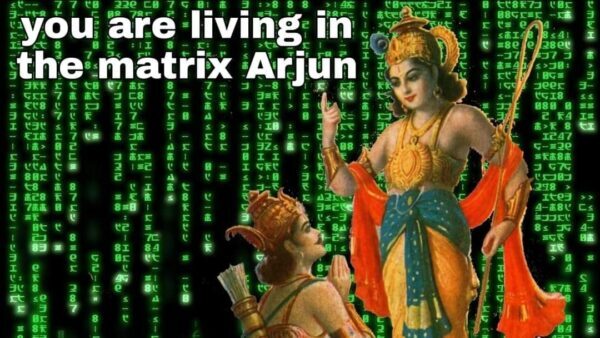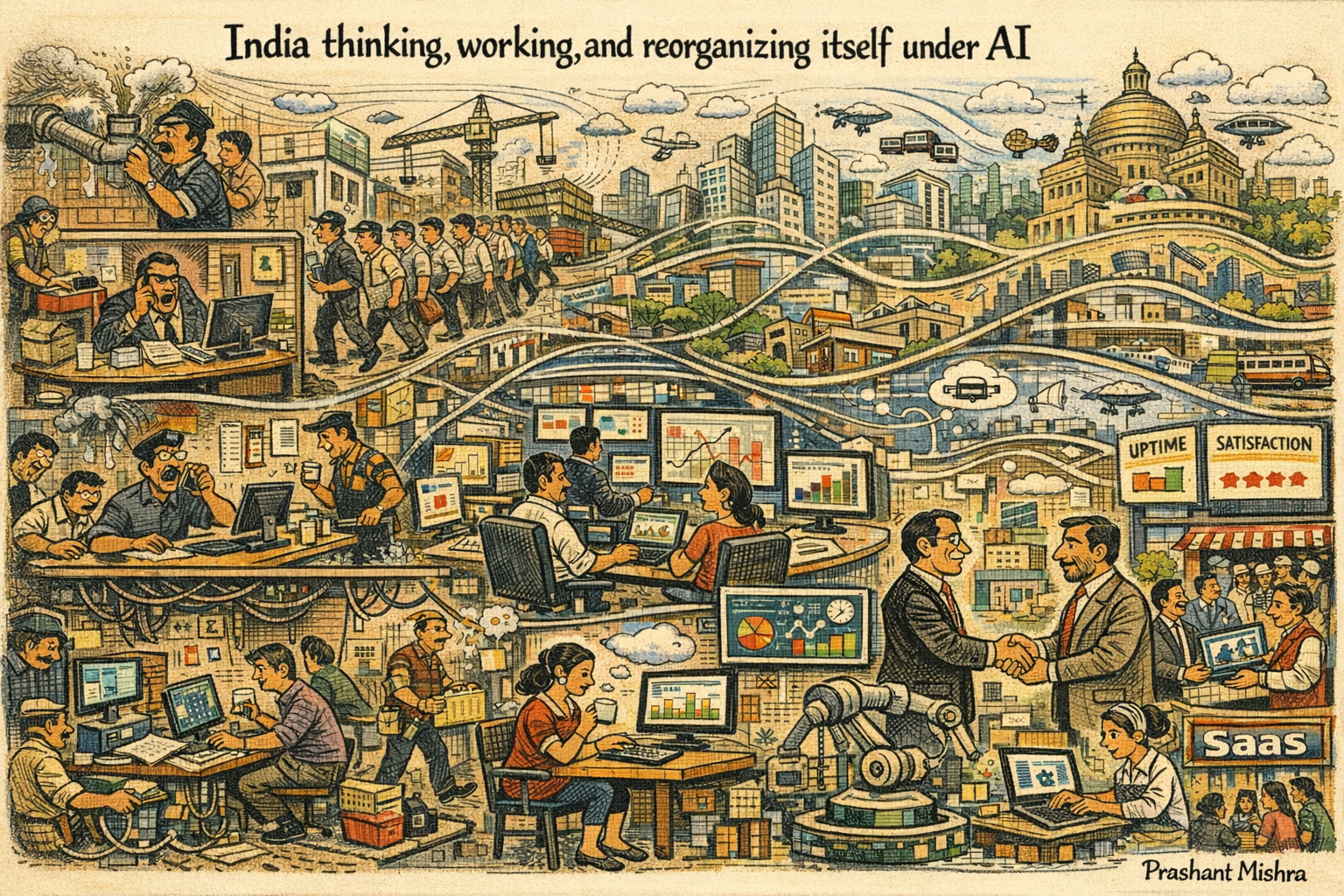
Living in Simulacra: Navigating the New Reality
The recent assassination attempt on Donald Trump while he was campaigning for the US presidential election has had the whole world talking. And if one goes by mainstream media stories, social media debates, etc., this incident has so many angles that it becomes challenging to figure out what is true and what is not.
Sometimes, it's baffling as to what the truth is! It is also baffling to figure out what we see and hear, or what we should see and hear. Joe Rogan's statement on his podcast, "If there has ever been a real indication that we are in a simulation," sums up this assassination attempt perfectly.
Perhaps we are immersed in a simulation, but it's not the kind we see in science fiction movies. This is a different kind.
Jean Baudrillard was a French sociologist, philosopher, and cultural theorist who was best known for his theories about postmodernity and the nature of reality. He concentrated his work on the influence of media, technology, and symbols on contemporary society. His seminal and perhaps most famous work, "Simulacra and Simulations," explores the complex relationships between reality, symbols, and society. He tries to understand how modern society interprets reality through symbols and signs, ultimately leading to a version of it that might not be real at all. Digital media, virtual experiences, and artificial intelligence dominate our age, making this especially important. He challenges us to question the authenticity of our experiences and the reality we inhabit.
But first, it is important to understand the concept of simulacra. Simulacra are copies of things that either never had an original version or no longer have one. For example, a photo of a unicorn is a simulacrum, as unicorns are not real. A simulation, on the other hand, refers to the imitation of a real-world process or system. For example, video games simulate real-life activities. Baudrillard states, "The simulacrum is never that which conceals the truth—it is the truth that conceals that there is none. The simulacrum is true." This means that simulacra do not hide the truth, but rather reveal that what we consider the truth may not exist.Finally, he discusses hyperreality, a state in which images and symbols mediate what we perceive as real, collapsing the distinction between reality and simulation..
Baudrillard was not the first to ponder and write about simulacra. In fact, it was Plato who first discussed it. But Plato had a different perspective. Plato believed that the world we see is not the real world because a real one would be perfect and unchanging. Instead, what we see around us is just an imperfect copy of that perfect, unchanging reality. He used the example of art to illustrate this: art is a copy of our world, which is already a copy of the real world. Therefore, art is a copy of a copy, or a simulacrum.
Baudrillard, however, argues that, in our modern world, it's difficult to distinguish between what is real and what is a copy. Moreover, he suggests that the fake often hides the fact that there is no underlying reality. Let's examine the case of Ms. Valeria Lukyanova, also known as the Human Barbie Doll. She has undergone multiple surgeries in order to look like a Barbie doll. But a Barbie doll is a figment of imagination that has been converted into a product, which means that it has never existedTherefore, from a logical perspective, Ms. Valeria is essentially a counterfeit. . The point of this story is that Ms. Valeria’s obsession with becoming a Barbie doll is not an unusual exception; instead, it is symptomatic of our modern world, where reality and fake are hard to distinguish, and often, we prefer the fake.
We argue that our preference for the fake extends deeper. We use this fake to conceal the absence of reality. In his book, he gives the example of Nixon and the Watergate scandal. The sacking of Nixon was supposed to show that the system works and that the democratic system is solid. However, Baudrillard argues that this is a simulacrum because it is nothing more than a comforting image with no real substance. We can prove this by observing the unsuccessful attempt to impeach Clinton. A similar attempt to impeach Trump also ended in failure. In reality, the comforting image of Western democracy has no real substance behind it. America is not a true democracy; a more accurate term would be "controlled democracy".
Another example that Baudrillard provides—one that is both intriguing and frightening—is Disneyland. Baudrillard argues that Disneyland exemplifies the concept of the simulacrum by creating a completely artificial world that visitors mistake for reality. Disneyland represents our modern society's quest for the ideal and flawless, even if it means embracing the fake. But what Disneyland truly does is hide the artificiality of the world that lies just outside its gates. The park offers a more appealing image of reality without the defects and difficulties of real life. This preference for simulation over reality shows how profoundly hyperreality has permeated modern civilization. People accept and love simulated encounters because they provide a better reality. Disneyland is not just a place of amusement but a sophisticated representation of how reality is constructed and consumed in the modern world. By creating convincing simulations that feel more real than reality itself, Disneyland exemplifies Baudrillard’s concept of the simulator.
So, how does the simulacrum come into existence?
Baudrillard defines four stages of simulacra. The first stage is the faithful copy, which is essentially a reflection of a profound reality. This is a positive and truthful representation, devoid of any malice. The second stage is the perversion of reality. At this stage, evil begins to distort reality, resulting in the creation of an "unfaithful" copy of reality that leads to deception. The third stage is the absence of reality. This is where the sleight of hand takes place; here, the object, image, or institution pretends to be a faithful copy, but it represents something that does not exist. In magic parlance, it's an illusion with no real reference. The fourth stage, pure simulation, is where the object, image, or institution has no relationship with reality; instead, it refers to other copies of the object, image, or institution, thus creating a world where nothing is real anymore.
And this change has happened over stages, too. The simulacra of the first order, which is associated with the premodern period, where representation is clearly an artificial place marker for the real item, starts with the Industrial Revolution, where the line between reality and image begins to blur due to mass production. Because the duplicate is just as "real" as its prototype, the ability of the image to resemble reality poses a danger to the authority of the original version. Late Capitalism's postmodernity, where imitation supplants the real thing and blurs the distinction between truth and representation, is associated with the Third Order. When there is only a simulacrum, the idea of originality loses all value.
Baudrillard's central idea is that our entire world is a simulation. All the institutions and systems we rely on are not real. This is where he differs from Plato. Plato believed there was a real, perfect world behind the apparent one. Baudrillard argues that there is no such underlying reality. He warns that unmasking images only reveals that there is nothing behind them. He identifies several factors that blur the line between reality and simulacra.
Media, including TV, film, and the internet, generates a demand for products by presenting commercial images. This is the origin of our current "attention economy."
Exchange Value: Money determines the worth of goods, not their utility. This is the origin of our current "material world," where Rolex is unique not because it tells the time like any other watch, but because of its price.
Multinational Capitalism: Production detaches itself from the original materials and processes. This is the genesis of the “consumer economy,” because mindless machines spitting out thousands of products need a buyer.
Urbanization alienates humans from the natural world. This is the origin of our "Facebook or Instagram" society, where people judge happiness based on likes, parties, weddings, and honeymoons, rather than the actual experiences.
Language and Ideology: Language produces power relations between social groups influenced by monetary terms. This is the genesis of our “gated communities, high-rise condos, and ultraposh neighborhoods," where people who can give or take benefits from other such people will come together.
We can better understand the above concept by using the example of Botox. For some time, Botox has gained popularity due to its purported ability to maintain youthful appearance. Despite the fact that aging is a natural process and looking young does not mean reversing age, people actively promote and use Botox. Despite the fact that Botox is a toxin, people are willing to risk their lives to inject it into their faces in an attempt to look younger. People who get Botox don't look younger; they look like they're trying to look younger. This rosy picture of youth doesn't match up with the truth. In reality, Botox doesn't transform a 60-year-old into a 40-year-old; rather, it accentuates the ideal appearance of a 60-year-old. So essentially, it is an inversion of the ideal and the real. That is what the Simulacra Hypothesis is all about.
The idea of Simulacra is so ubiquitous that once you understand it, you can't help but see it everywhere. Consumption and social media are the most prominent examples of how our current post-modern society thrives on this very concept. We buy certain objects that we believe will help us become our “true” selves. We post pictures, make reels, and copy-paste comments to present our “true” selves. But that “true” self is just another idealized image. We live in a world of mirrors, reflecting distorted images back at us. Desire manipulates these images, distorting our identity and aspirations. According to Baudrillard, there is no real, undistorted image, only desires and twisted representations.
Our desire for the world around us to mean things that we want it to mean forces a kind of idealized version of the world on us. The issue lies in the fact that our idealized perception of the world is not reality. Consequently, vested interests generate a demand and begin to satisfy it. Consequently, various viewpoints gain equal validity. The terrorist simultaneously assumes the roles of a freedom fighter, a cynic, a madman, and a confused victim of circumstances. Each version is available, and each is as real as the others. Our desire for the world to fit our idealizations forces us to see the world in a certain way, making it impossible to separate these idealizations from reality.
Baudrillard challenges the notion of reality, suggesting that what we perceive as real is just a series of simulacra. While it’s challenging to accept that there is no underlying reality, Baudrillard’s exploration of how our idealizations shape our world reveals the dark side of our desires. His work compels us to question the authenticity of our experiences and the nature of the reality we live in. Baudrillard passed away on March 6, 2007, remaining true to this idea.
Come November, either a Democrat or a Republican will win. But we will always lose.


